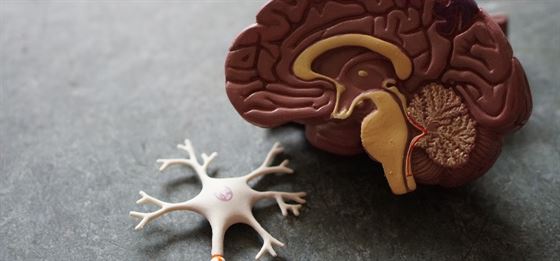
What is Cognitive Dissonance and How Can I Manage it Well

Cognitive dissonance occurs when your brain holds two or more conflicting ideas simultaneously. This creates psychological tension, which people try to reduce by either changing their beliefs or taking action to make them more consistent. Cognitive dissonance was first introduced by Mr Leon Festinger, an American social psychologist, and the theory proposes people have a motivational drive to reduce inner conflict. The American Psychological Association has defined cognitive dissonance as "an unpleasant psychological state resulting from inconsistency between two or more elements in a cognitive system."
In the book, A Theory of Cognitive Dissonance, Mr Leon Festinger shares how people try to avoid cognitive dissonance in their lives. According to him, there are three defense mechanisms people usually adopt:
1. Avoiding
This is when people try to avoid any information or situation which may cause cognitive dissonance.
For example, a person who doesn't want to believe smoking is harmful might avoid reading articles or watching documentaries about the negative effects of smoking.
2. Delegitimizing
This is when people try to delegitimize, discredit or undermine any information or situation which may lead to cognitive dissonance.
For example, a person who doesn't believe in climate change might delegitimize any scientific evidence that proves it's a real phenomenon.
3. Limiting Impact
This is when people try to limit the impact of any information or situation which causes cognitive dissonance.
For example, a person may attempt to limit the impact of global warming by saying it's not caused by human activity.
Causes of Cognitive Dissonance
There are many different causes of cognitive dissonance. These include:
- Having conflicting beliefs about a topic
- Experiencing a change in lifestyle or circumstances
- Being exposed to new information which contradicts existing beliefs
- Facing similar choices with different outcomes or the same outcomes with different choices
Cognitive dissonance often leads to anxiety, stress and depression. It can also lead to irrational decision-making, as people try to reduce the dissonance by any means necessary. Some of the effects of cognitive dissonance include:
1. Increased Stress
Cognitive dissonance creates psychological tension, which can lead to increased stress levels. This can impact a person's physical health, as well as their mental well-being.
2. Not Acknowledging Your Behavior
Sometimes, you may be aware of your behavior, but you may not want to acknowledge it. This is because admitting you are wrong can be difficult and cause cognitive dissonance.
3. Unhappiness
Contradictory thoughts and information can lead to unhappiness, as it's difficult to be content when you are constantly doubting yourself.
4. Avoiding Information
Cognitive dissonance can also lead people to avoid situations or information that is inconsistent with their beliefs.
Examples of Cognitive Dissonance
People face cognitive dissonance on a daily basis. Here are some examples of cognitive dissonance:
- When people smoke cigarettes despite knowing the health risks, they experience dissonance. To reduce this feeling of uneasiness, they may try to rationalize their behavior by convincing themselves smoking won’t harm them
- When people buy expensive items that they know they don't really need, on sale, they may experience cognitive dissonance. To reduce this dissonance, they may convince themselves they got a good deal or the item is worth the price.
- People may also experience cognitive dissonance when they hold different political beliefs from their family or friends. This can lead to arguments and conflict, as people try to reduce dissonance by convincing others to change their beliefs.
How to Solve Cognitive Dissonance?
Cognitive dissonance is a normal part of everyday life. However, it's important to be aware of the effects it can have on your mental and emotional well-being. It is important to learn how to resolve cognitive dissonance in a healthy way. Three steps you can follow are:
1. Change Actions
Changing your actions to match your beliefs can often be tough however, it is an important way to reduce cognitive dissonance.
2. Challenge Beliefs
Beliefs you have held for a long time can be difficult to change. However, it is important to challenge your beliefs from time to time, in order to reduce cognitive dissonance.
3. Develop a New Perspective
A fresh perspective can often help you to see things in a new light and reduce cognitive dissonance. It is important to be open-minded and willing to accept new ideas.
It can take time and effort to reduce and/or manage this type of inner conflict. And changing long-held thought patterns, beliefs and emotions is not always possible without some support. If you find yourself in a situation where you believe your daily activities, decision making, and relationships are being negatively affected by cognitive dissonance, then it is time to seek professional help.
Articles
Build your awareness and get inspired with our researched articles on how you can strengthen your well-being
Popular Topics
An OTP has been sent to the email address
provided.
Please check your Inbox and Spam folders.

What Would You Like to Speak with a Specialist About?
Mental Fitness Journey starts Now!
Chearful Connects you with Top-tier Qualified Wellness specialists for the Price of a cup of Coffee!

Next Steps
- A Client Team member will reach out to you to schedule a session with the most suitable specialist.
- You will receive an email with a 10% Discount Code* for your 1st session.
- We invite you to Explore the Platform & Sign Up today! *Upto a maximum of $10 discount on a session purchased




 2048 Read
2048 Read




.jpg)









.png)
.png)
.jpg)

.jpg)

.jpg)




.jpg)


































.jpg)

.jpg)
.jpg)


















































